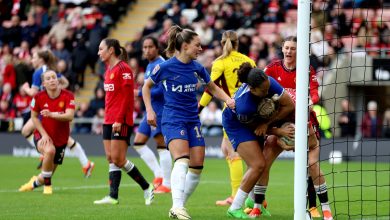Uruguay’s controversial winning goal against the USMNT explained


The United States are out of the Copa America they are hosting this summer after losing 1-0 to Uruguay in their final group game on Monday – but Mathias Olivera’s goal was controversial.
Olivera scored the goal in the 66th minute after Ronald Araujo’s initial header was saved by Matt Turner. But some angles suggested Napoli left-back Olivera was offside in the build-up to the goal, which was upheld, much to the Americans’ dismay, after a VAR check.
CONMEBOL, the South American football federation whose regional championship is being held despite the 2024 edition being held in the United States, has now released video and audio of the review process.
So what happened and how did officials make the decision to let Olivera’s attempt go ahead?
The IFAB, the body that establishes the laws of football worldwide, states that a player is offside if any part of his head, body or feet is closer to the opponent’s goal line than the ball and the second-last opponent. A player is not offside if he is level with the second-last opponent or the last two opponents.
In the 65th minute of Monday’s match at Arrowhead Stadium in Kansas City, Missouri, Uruguay was awarded a free kick after Giovanni Reyna fouled right back Nahitan Nandez. Off the set piece, attacking midfielder Nicolas de la Cruz sent the ball toward Araujo’s goal. Turner stopped the first attempt but couldn’t stop Olivera’s effort.
The first angle of the goal shows the moment De la Cruz crosses, with a Uruguayan player appearing offside on the other side of the pitch. Ecuadorian video assistant referee (VAR), Carlos Orbe, asks to see the “touchpoint” and replies: “I want to see who’s playing,” referring to Araujo. Peruvian referee on the pitch, Kevin Ortega, is heard saying: “There may be offside, but we’re checking. OK? Thanks.”
Orbe asks to see a close-up of the initial contact, which appears to show Olivera putting himself in an offside position behind the American defense. One of the VAR team members says everything is fine.

As the video changes angle, Ortega says the “second action,” where Olivera scores, is “tight.” Ecuadorian VAR assistant Bryan Loayza confirms they are checking the “situation in the penalty area” for a possible offside.

The VAR referees begin to draw two lines to determine whether Olivera was offside at the time of Araujo’s header. They draw a horizontal blue line on the pitch, in line with American defender Chris Richards’ left foot, and a vertical red line in line with Olivera’s knee.
“We check, OK, it’s possible,” Ortega said in English on the field.

Loayza says they’ll need “more time” and asks Ortega to point it out. A single blue line shows that Richards’ foot – or toe – is aligned with Olivera’s knee. Ortega says, “That’s an overlap and that’s good.”

Orbe then says that “the second situation is good, I’m about to review the first”, while he is shown the first angle of De la Cruz’s ball into the area.
“The second one was checked, we’re going to do the first one (regarding) Araujo,” Ortega says on the field, in Spanish. Another blue line is drawn on the field as the cross arrives, zooming in on a group of players to make sure the shot is made from any part of the body with which they could legally score.

Ortega is heard saying: “It’s very tight, it’s very tight! They’re drawing the lines.”
Orbe says that angle, in line with the goal, is the “best,” and the lines are drawn again for Araujo’s header. The horizontal blue line is placed in line with Richards’ foot and the vertical red line is placed in line with Olivera’s knee. Loayza tells the referee on the field that these are “two tight situations.”

Orbe confirms that he sees an overlap on both angles, which means that Olivera is not offside. He asks for the video to be shown to show the moment when Olivera scores and confirms that it is a goal by Ortega. “Both situations are tight, but they are offside,” explains the VAR.
The final result meant the United States were unable to match or improve on Panama’s 3-1 win over Bolivia in the other Group C match taking place at the same time in Orlando, Florida, and therefore finished third, with only the top two advancing to the knockout stages.
But their complaints about Ortega – who made several odd decisions during the match – aren’t going away anytime soon.
(Top photo: Shaun Clark/Getty Images)
News Source : www.nytimes.com
Gn sports





&w=390&resize=390,220&ssl=1)